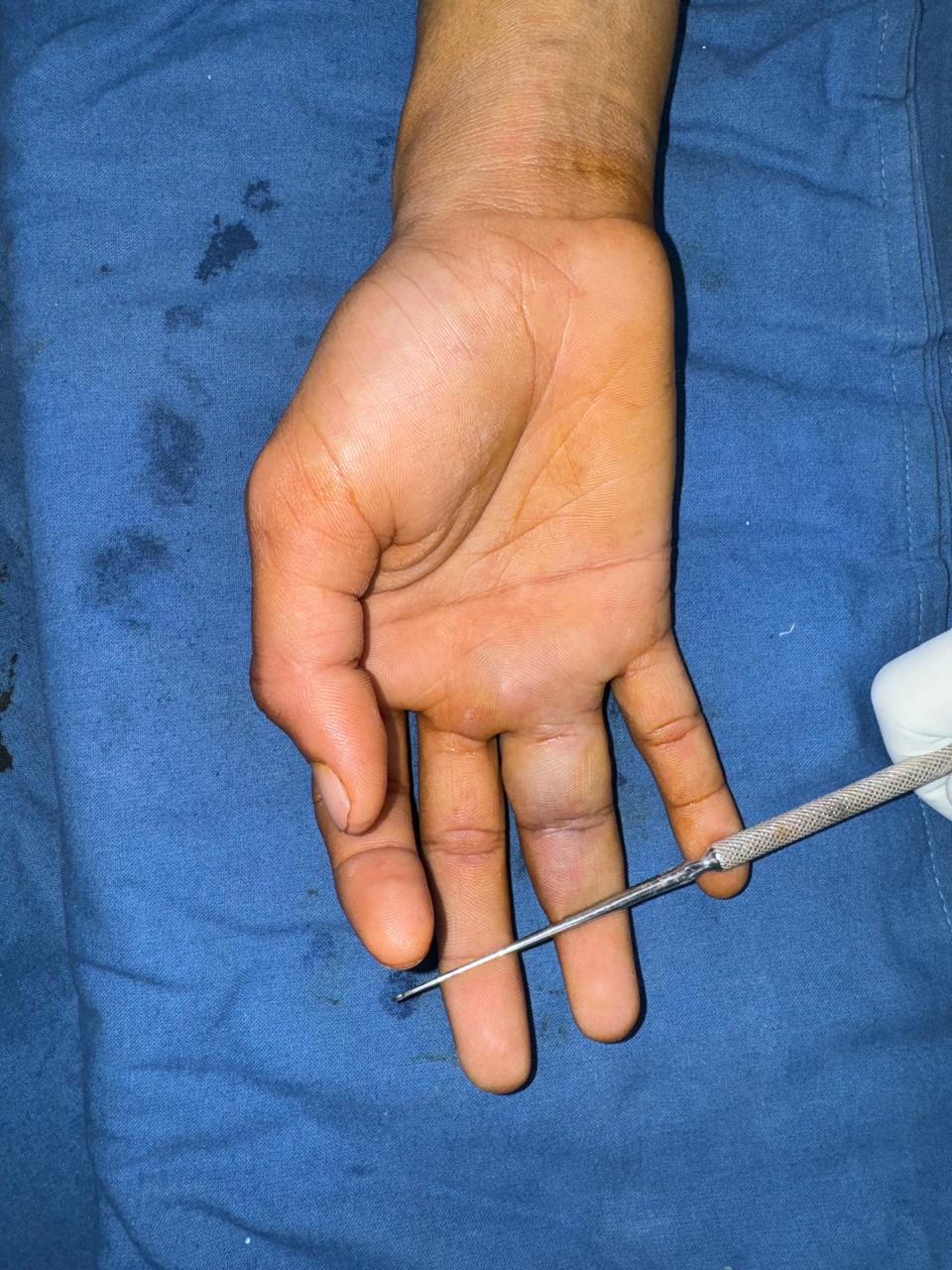The Silent Struggle of the Carpal Tunnel
Our bodies are extraordinarily complex yet beautifully crafted, with every structure serving a specific purpose. The carpal tunnel is no exception. Though infamous for causing carpal tunnel syndrome, this natural marvel is a hypothetical tunnel, a narrow passageway thats formed by a ligament and two bones and 10 structures pass through this tunnel including 9 tendons and a nerve – Median Nerve. This nerve provides sensation to the thumb, index, middle, and part of the ring finger, while also controlling some of the small muscles at the base of the thumb that allow for fine motor movements.The ligament which is specifically called Transverse carpal ligament is a part of the flexor retinaculum which is a thick band under wrist on the side of palm to make the wrist stronger and keep underlying structures in place.
Carpal tunnel syndrome often begins insidiously, with symptoms so subtle that patients remain unaware of the problem until it becomes severe. Left untreated, it can progress to a point where surgical intervention becomes the only option. Many patients delay seeking specialized care, often consulting a general physician or neurologist. However, carpal tunnel syndrome is best treated under the expertise of an orthopaedic surgeon—and even more effectively, by a specialist in hand surgery.
Understanding the Pressure Within: The Origins of Carpal Tunnel Syndrome
The symptoms of carpal tunnel syndrome arise due to a narrowing of the canal, which can occur for two main reasons. Primary causes involve thickening of the transverse carpal ligament, while secondary causes stem from conditions that encroach upon the tunnel. These might include soft tissue changes from arthritis leading to synovitis, enlargement of the nerve, tendons, or tendon sheaths, or even bony issues like tumors, fractures, or implants.
Our bodies are incredibly adaptive and always strive to heal. In carpal tunnel syndrome, the tendons within the tunnel try to adjust to the increased pressure caused by the narrowing. However, the Median Nerve, being far more sensitive, struggles to cope. This results in classic symptoms such as tingling in the fingers, numbness, and weakness.
Interestingly, this is not unlike our own lives. We constantly adjust to the pressures of daily existence, adapting to the push and pull of circumstances. But sometimes, like the Median Nerve, we reach a breaking point. The strain catches up with us. And just as in life, there comes a moment when we must step back, assess the situation, and take corrective action to heal.
And so, let’s delve into how we identify, address and fix this remarkable yet challenging condition: the journey from discomfort to recovery.
The Progression of Carpal Tunnel Syndrome
Carpal tunnel syndrome often begins innocuously—a fleeting tingle in the fingers while holding a phone or performing everyday tasks. At first, it seems harmless, but as the condition progresses, it can disrupt sleep, with patients waking up due to severe tingling. Over time, symptoms escalate to include a weakening grip, difficulty holding objects, and even frequent dropping of items.
To diagnose and assess the severity of this condition, we typically perform a Nerve Conduction Study (NCS)—a noninvasive test that measures how quickly electrical impulses travel through the nerves. The results help us grade the severity of the syndrome on a scale of 1 to 6, with higher grades indicating more advanced disease and the need for more intensive intervention.
There is a theory that conservative treatments, such as steroid infiltration or hydrodissection, can provide relief for carpal tunnel syndrome. While these methods may work in mild to moderate cases, my experience has shown that for more severe cases—typically with an NCS grade greater than 3—surgical intervention becomes necessary. A surgical release effectively decompresses the nerve, providing a lasting solution to alleviate symptoms and prevent further damage.
Advancements in Carpal Tunnel Surgery: Precision and Recovery
Over the years, carpal tunnel surgery has seen significant advancements in precision and technique. I feel privileged to have performed hundreds of these surgeries, each one a learning experience shaped by the feedback and outcomes of my patients. The procedure I now perform involves a remarkably small incision—smaller even than those used in endoscopic techniques.
This refined approach not only minimizes scarring but also accelerates recovery. Most patients are able to resume dry activities as early as the day after surgery, and by the 12th day, they are typically back to their normal routines without complications or morbidities. It’s a testament to how far we’ve come in providing effective and patient-friendly solutions.
Nature’s Unexpected Miracle in Carpal Tunnel Syndrome
I often marvel at the wonders of nature, especially when it comes to carpal tunnel syndrome. Interestingly, most patients experience the condition on both hands, but one side is usually more severe. What’s fascinating—and deeply satisfying—is that after performing surgery on the more affected side, the symptoms on the opposite hand often resolve on their own within 3-4 months.
Many patients, thrilled by the relief they feel after surgery, are eager to undergo the procedure on the other hand as well. However, I usually counsel them to wait and allow time for nature to work its magic. More often than not, their symptoms improve without further intervention, reaffirming the body’s incredible ability to heal itself when given the chance.
Healing in Harmony with the Body
As a surgeon, I believe our role extends beyond simply performing procedures—it’s about working in harmony with the body’s remarkable ability to heal itself. Every time I step into the operating room, my goal is not only to treat but to support and amplify the body’s natural defenses and healing mechanisms. By striving to align my efforts with this innate resilience, I aim to deliver the best possible outcomes for my patients. It’s this synergy, this partnership with nature’s design, that brings me fulfillment and makes every day in this profession deeply rewarding.
